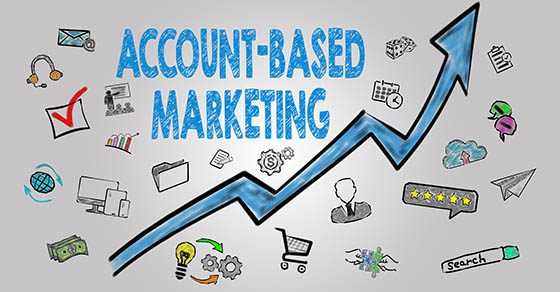
When it comes to marketing, business owners and their leadership teams often assume that they should “cast a wide net.” But should you? If your company is looking to drive business-to-business (B2B) sales, a generalized approach to marketing could leave key customers and optimal prospects feeling like they’re receiving vague messages from a provider that doesn’t really know them. That’s where account-based marketing comes in. Simply defined, account-based marketing is a strategy under which marketing and sales teams collaboratively focus on targeted high-value accounts. The objective is to create a customized experience for each account that locks in the buyer long-term through deep relationship building and personalized service.
Benefits and risks. The primary potential benefit of a successful account-based marketing campaign is return on investment (ROI). By focusing on customers and prospects most likely to invest substantial dollars in your products or services, you’ll better position yourself to win those odds and bring in substantial revenue. Indeed, the internet abounds with marketing surveys indicating that large percentages of responding B2B companies have gotten a higher ROI from account-based marketing than from other strategies. Another potential benefit is better-aligning marketing with sales. Many businesses struggle with mismatched messaging coming from the marketing and sales departments, respectively. This can lead to customer confusion and internal conflicts. Account-based marketing requires marketing and sales to work together to devise a unified, unique approach to each targeted account. A third potential benefit is establishing your B2B company as an industry expert. In most industries, when word gets out that a company is successfully marketing directly to certain well-known players, that business’s reputation rises because, clearly, it “speaks the language.” Of course, account-based marketing has its risks. The biggest one is, as you might’ve guessed, a negative ROI. You’ll need to invest substantial time and resources on each targeted account. If the initiative flounders, the resulting losses can be steep. You may also end up ignoring other customers or prospects. Your business could even hurt its reputation by interacting with a major industry player in a less than flattering way.
Three steps to success. So, how do you avoid those downsides? Here are three general steps to success:
1. Create a framework. Before doing anything, your business will need a broad framework for executing an account-based marketing strategy. A good way to build one is to use a readily available template to map out the process. You’ll also need to form a dedicated account-based marketing team. You might even invest in specialized software to automate everything.
2. Choose your targets. This may be the most important step! You’ve got to pick the customers and prospects that are the best fits for account-based marketing. It’s generally best to start with a short list or even just one or two. Next, meticulously research key details about each business, such as its mission, size, revenue model and spending patterns. Also, identify the specific individuals you’ll need to win over within the target company.
3. Design, execute and analyze. As mentioned, you’ll need to design a customized campaign for each account. Do so with great care, relying on your research and meaningful interactions with contacts at the business in question. From there, be prepared to measure and analyze your results and iterate the campaigns as necessary.
A significant boost. Account-based marketing isn’t feasible for every business. But if you believe that messaging directly to a few key customers or prospects could give your B2B company’s sales a significant boost, it’s worth considering. For help projecting the results of an account-based marketing campaign, or assistance choosing and analyzing metrics for a campaign in progress, contact us. © 2024
